Internal communications webinars: transform your employee engagement strategy in 2025
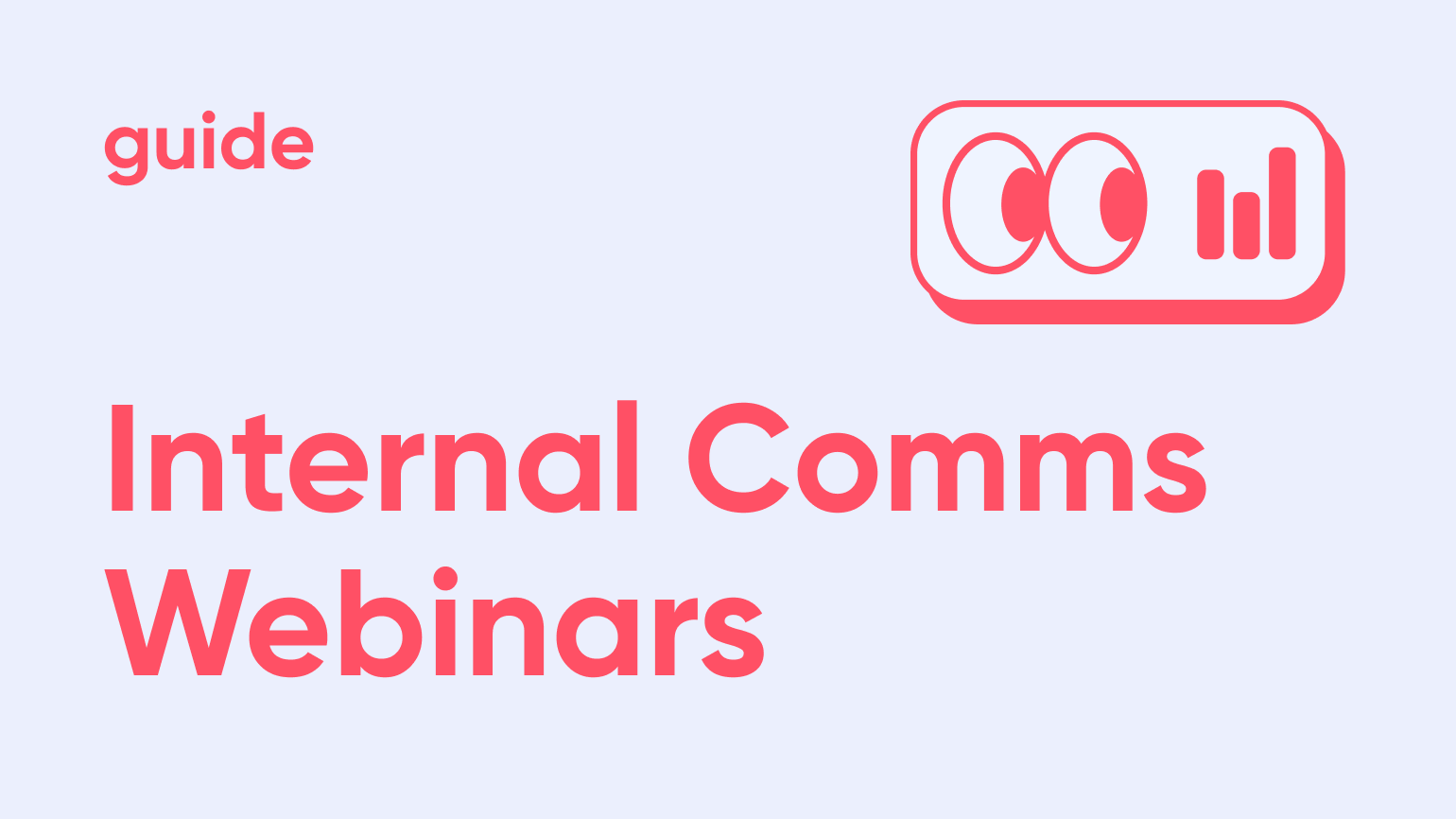
Modern organizations face a critical challenge: how to communicate effectively with distributed teams. Traditional methods fail when employees work remotely, across time zones, or in hybrid arrangements that limit face-to-face interaction.
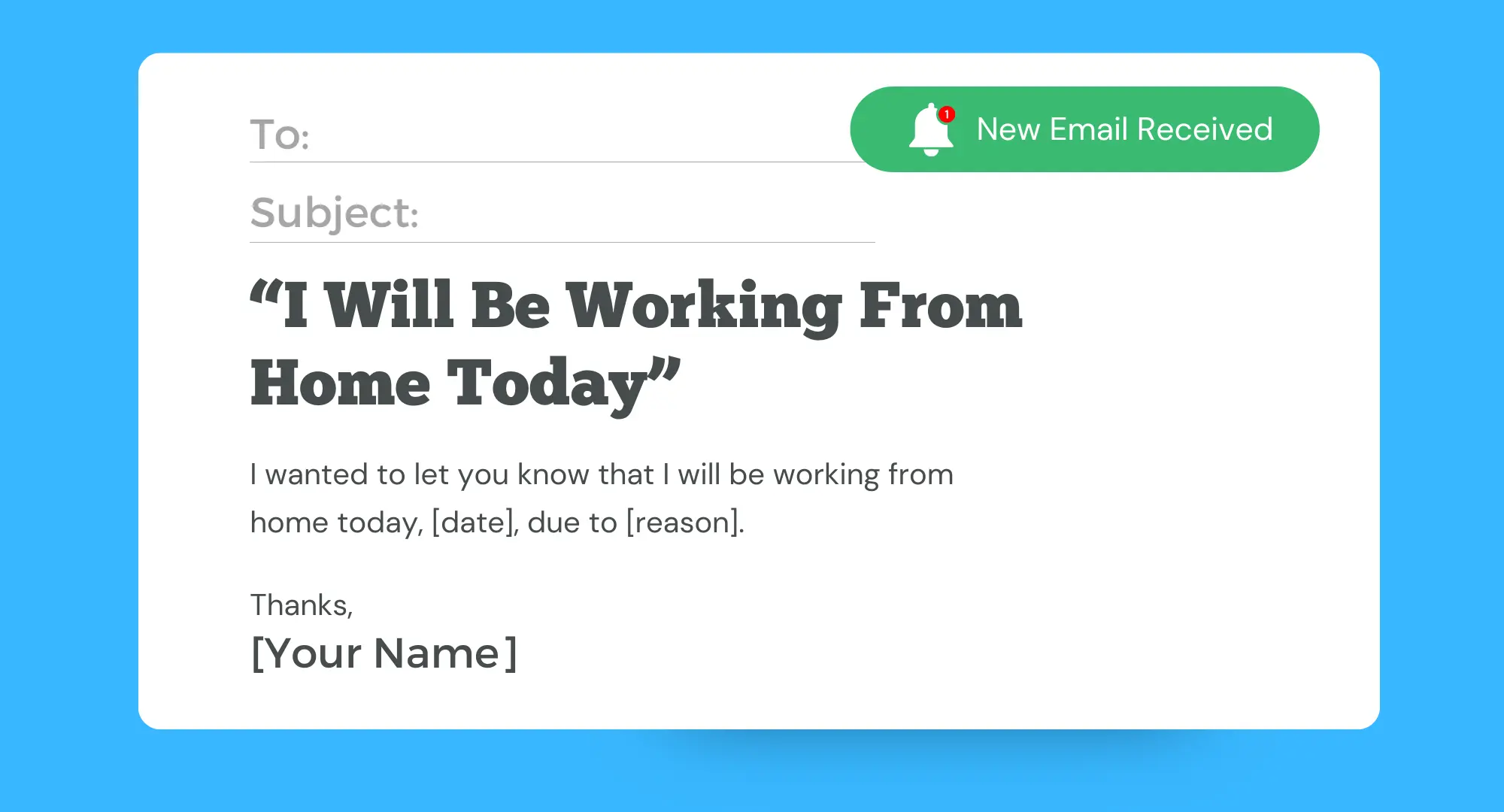
Internal communications webinars have emerged as the solution that finally enables consistent, engaging dialogue between leadership and employees. These virtual events don't just share information - they create genuine two-way communication that drives engagement and alignment. Companies that prioritize strong internal communication report up to higher retention rates, and over 60 % of employees express dissatisfaction when these channels are lacking
Successful organizations use webinars to stay connected with their workforce, especially as teams become more distributed. Whether you're planning your next event in July, August, or November, the opportunity to gain meaningful engagement has never been more critical for business success.
Why internal communications webinars matter for modern organizations
Poor internal communication creates serious business problems. Information silos develop, productivity decreases, and talented employees leave for organizations that communicate more effectively. When information doesn't circulate effectively, teams become disconnected from company goals and each other.
The modern workplace demands new communication approaches. Remote and hybrid work arrangements eliminate casual conversations that previously spread important information. Internal comms now serve as the backbone of employee engagement in distributed work environments. Companies that master this see remarkable improvements in retention and performance.
The cost of poor communication
Research reveals the financial impact of communication failures. Companies lose an average of $62.4 million annually due to poor internal communication. This manifests in multiple ways: projects fail due to misalignment, employees quit from frustration, and customers receive conflicting information from different departments.
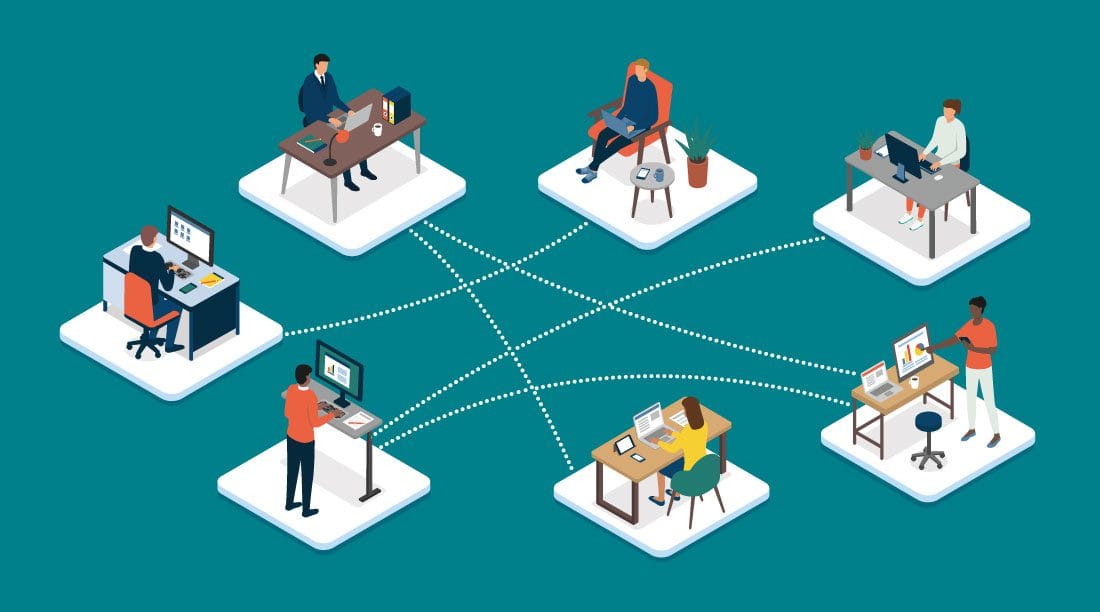
While precise percentages vary, ineffective communication increases stress (51 %), decreases productivity (41 %), and induces job dissatisfaction (35 %) among employees. This understanding gap between teams and leadership generates massive collaboration losses that compound over time. Industry experts consistently find that clear communication directly correlates with business performance and competitive advantage.
Latest trends driving change
The internal communications landscape evolves rapidly as employee expectations shift. 2025 trends are completely rewriting the rules of employee engagement through technology adoption and changing workplace dynamics. Artificial intelligence personalizes messages at scale while advanced analytics measure real engagement rather than superficial metrics.

Smart communication leaders have abandoned generic approaches that treat all employees identically. Visual communication typically leads to far higher retention than plain-text messaging. This optimized workplace experience requires an event-driven approach where every communication creates memorable, actionable moments.
What are internal communications webinars and how they drive engagement
Internal communications webinars represent interactive digital events designed specifically for employee audiences. Unlike standard emails or announcements, they create real-time dialogue between leadership and staff while accommodating distributed workforces effectively.
These virtual events redefine how organizations connect with their employees. Modern webinars create workplace experiences that resonate long after sessions end by transforming one-way broadcasts into collaborative conversations where employees feel heard and valued.
Defining webinars for modern workplaces
An internal communications webinar differs fundamentally from regular online or all hand meetings. It's a structured digital event designed to create human connection through technology while serving specific communication objectives that support business goals.
The key distinction lies in intentional design and execution. Internal webinars are crafted experiences with clear scripts, strategic staging, and planned interaction moments that maximize engagement and information retention. Successful programs create immersive experiences that influence behavior and attitudes.
Formats vary according to communication objectives and audience needs. Live sessions provide urgency and authenticity for time-sensitive announcements. Pre-recorded content offers quality control and consistency for training materials. Hybrid approaches combine both methods for maximum flexibility and reach.
Webinars vs. alternative communication solutions
Email communication works for simple information sharing but fails to generate engagement or ensure comprehension. Most employees skim emails quickly without retaining key details, especially for complex or strategic topics that require deeper understanding.
Teams meetings serve functional purposes but often lack structure and clear outcomes. Participants frequently multitask rather than engage actively, reducing information retention and decision-making effectiveness. Webinars capture attention through their structured presentation format that guides audience focus throughout sessions.
Company newsletters and intranets store information but provide zero real-time feedback about comprehension or employee sentiment. Webinars immediately reveal message effectiveness through questions, reactions, and participation levels that inform future communication strategies.
Topics covered in internal communication webinars
Internal webinar topics address diverse organizational communication needs. Technical training transforms complex concepts into digestible, interactive experiences that achieve higher completion rates than traditional e-learning approaches or documentation-based instruction.
Change communications become more effective when delivered through interactive formats. Rather than announcing organizational changes through impersonal emails, webinars allow leadership to explain reasoning, address concerns directly, and build understanding that reduces resistance and increases buy-in.
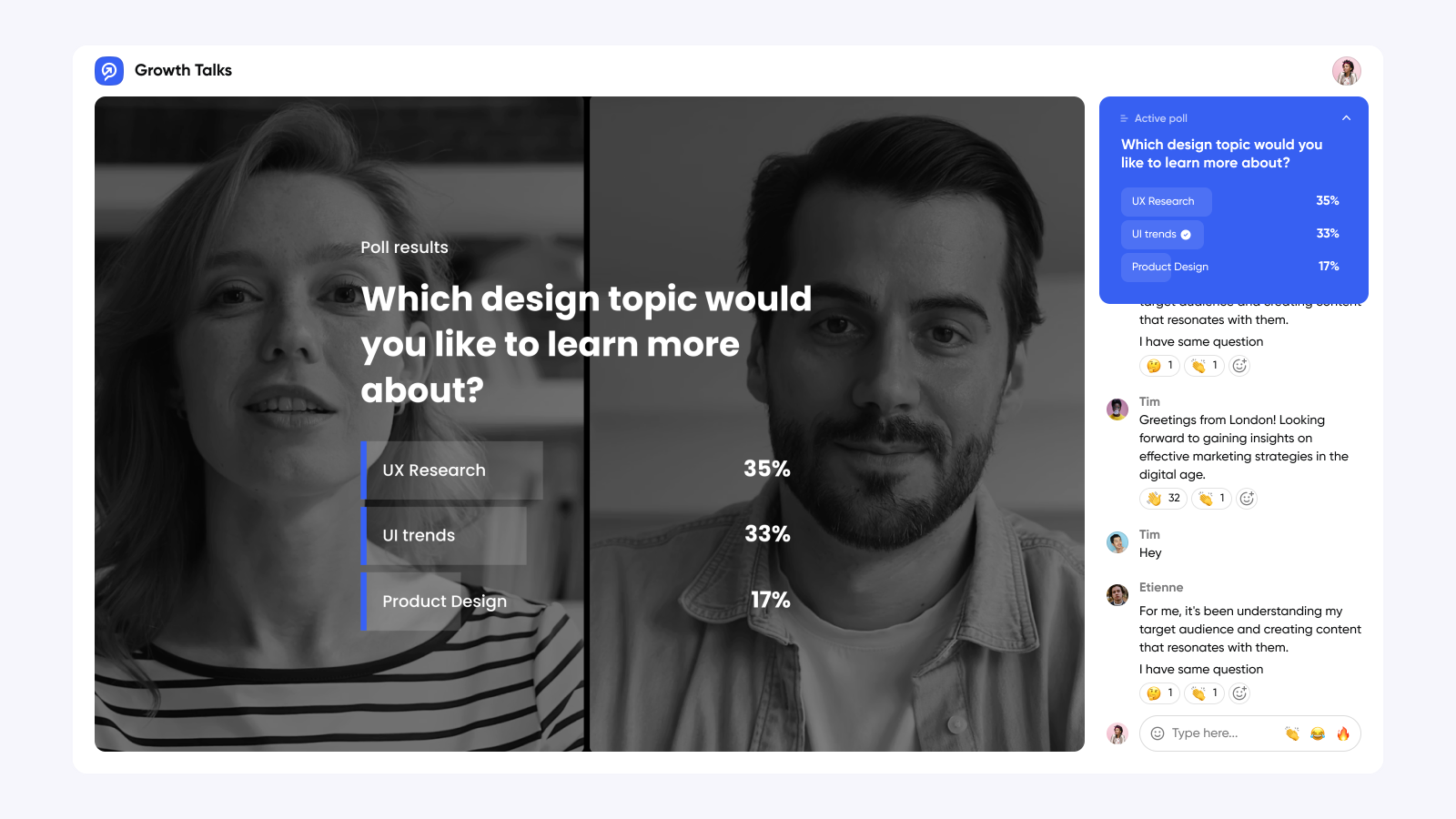
Leadership updates gain authenticity and impact through live interaction. Seeing executives respond to questions in real-time creates transparency that builds trust and alignment between leadership and workforce. Training and development sessions boost performance through hands-on workshops while crisis communication provides immediate organization-wide updates.
Key benefits of internal communications webinars for organizations
Internal webinars generate measurable business value that justifies investment and resource allocation. Organizations report much stronger engagement through webinars versus traditional communication methods.
The return on investment appears in concrete financial terms that directly impact organizational performance. These initiatives typically reduce errors, turnover, and increase overall productivity.
Measurable business impact
The financial benefits extend beyond direct communication costs to influence broader organizational performance. Replacing traditional methods with interactive webinars often leads to cost savings and improved message retention.
Travel elimination creates immediate savings when webinars replace regional meetings or training sessions. However, the real value emerges from improved alignment and reduced confusion that eliminates wasted work and accelerates decision-making processes throughout the organization.
Clear communication eliminates productivity losses that result from misunderstanding or incomplete information. When employees understand objectives clearly, they spend less time seeking clarification and more time creating value for customers and stakeholders. This efficiency gain compounds over time as communication quality improves.
Creating inclusive employee experiences
Webinars democratize access to information and leadership regardless of employee location, schedule constraints, or physical limitations that might prevent participation in traditional meetings or events.
Geographic distribution becomes irrelevant when communication is designed for universal participation. Remote employees often report feeling more connected through well-designed webinars than through traditional office-based communications they couldn't attend due to location constraints.
Language barriers diminish through automatic translation features and real-time subtitles. Your multinational team can participate equally regardless of their English or French proficiency levels while cultural adaptation ensures content resonates across different regional contexts and business environments.
Streamlining communications at scale
Webinars enable consistent messaging delivery to thousands of employees simultaneously without the logistical complexity and expense of multiple in-person events or cascading communication through management layers.
Large-scale participation actually enhances rather than diminishes engagement quality. The collective energy and shared experience create community building that strengthens organizational culture while ensuring everyone receives identical information simultaneously.

Message consistency becomes manageable when leadership can deliver content directly to all locations without intermediary interpretation or modification. This eliminates communication distortion that occurs when information passes through multiple management layers before reaching front-line employees who need accurate, actionable guidance.
How to engage employees through webinars: proven strategies
Successful employee engagement through webinars requires strategic planning and skilled execution that captures attention, creates emotional connection, and influences behavior long after sessions end.
Interactive elements transform passive information consumption into active participation that increases retention and builds investment in outcomes. The most effective programs treat employees as collaborators rather than audiences.
Interactive tools that drive engagement
Real-time polls convert passive spectators into active participants who contribute to conversation direction and outcomes rather than simply consuming predetermined content. This participation creates investment in session results and organizational decisions.
Live Q&A sessions generate authentic energy and unpredictability that maintains attention throughout extended presentations. Spontaneous questions reveal actual employee concerns rather than assumptions about information needs or organizational priorities.
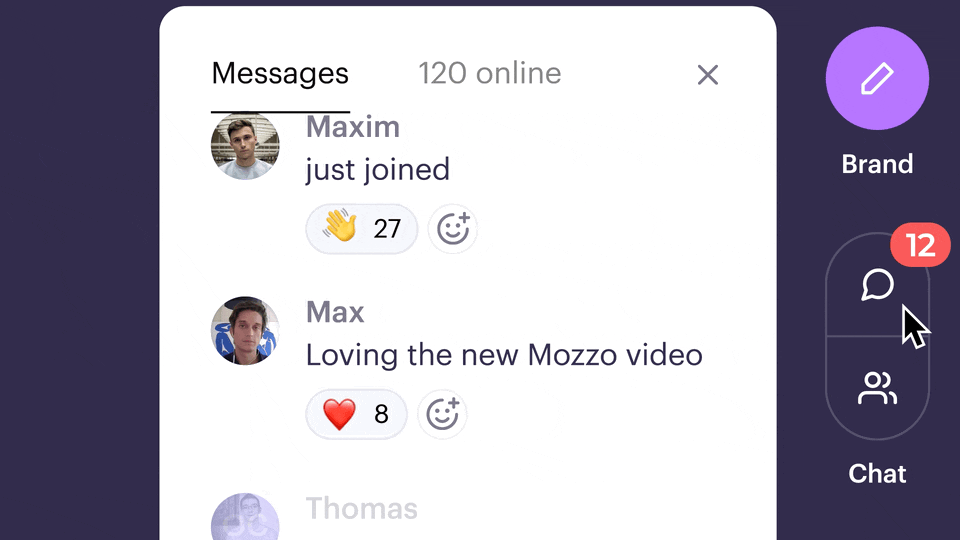
Breakout rooms enable intimate conversation within large group settings. Dividing participants into small teams for focused discussions recreates the relationship-building aspects of in-person meetings while maintaining virtual event efficiency and cost advantages.
Real-time feedback and participation
Immediate feedback mechanisms function as engagement monitoring systems that reveal whether content resonates with intended audiences or requires adjustment to maintain effectiveness and relevance.
Skilled facilitation involves adaptive response capabilities that modify presentation based on audience engagement signals. The best facilitators balance prepared content with spontaneous interaction that creates authentic dialogue rather than scripted performance.
Multiple participation options accommodate different personality types and communication preferences. Anonymous questions encourage contributions from introverted employees while polls and chat features provide alternatives to verbal participation that some find intimidating or inappropriate.
Adapting to different employee segments
Different employee generations bring distinct communication preferences that influence engagement levels and information processing approaches. Millennials appreciate interactive elements while Gen X values efficient, focused delivery that respects time constraints.
Role-based customization increases relevance by addressing specific professional challenges and opportunities. Technical audiences require different depth and detail levels than executive teams who need strategic overview rather than operational specifics.
Geographic and cultural considerations affect participation patterns and content reception. Global organizations must adapt examples, references, and interaction styles to accommodate different cultural norms and business contexts while maintaining consistent core messaging.
Overcoming common challenges and resistance
Every webinar program encounters predictable obstacles that require proactive planning and systematic solutions rather than reactive problem-solving after issues damage program credibility or stakeholder confidence.
Understanding resistance patterns enables preparation of effective responses that transform objections into improvement opportunities while building stronger stakeholder support for program expansion and enhancement.
Addressing webinar fatigue

Employee resistance to virtual events reflects legitimate concerns about screen time and meeting overload that developed during pandemic-driven remote work transitions that increased video communication dramatically.
The solution involves strategic program design rather than technology abandonment. Ultra-focused 15-minute sessions often achieve better results than hour-long presentations that compete with other demands on employee attention and time.
Format variety prevents predictability that reduces engagement over time. Alternating presentation styles, interaction methods, and content approaches creates anticipation rather than resignation when employees receive webinar invitations or calendar notifications.
Managing leadership resistance
Manager reluctance often stems from unfamiliarity with virtual facilitation or concerns about appearing ineffective in formats that require different skills than traditional in-person presentation or meeting management.
Transformation from resistance to advocacy requires collaborative involvement rather than top-down mandates. Including skeptical managers in program design and content development creates ownership and investment that generates authentic support throughout implementation.
Concrete evidence proves more persuasive than theoretical benefits for skeptical stakeholders. Pilot programs with measurable results provide compelling cases for broader implementation while building confidence in program management and execution capabilities.
Technical troubleshooting
Technical reliability represents the foundation that enables content effectiveness and audience engagement rather than creating distractions that undermine message delivery and speaker credibility.

Comprehensive preparation and backup planning prevent single points of failure that could derail important communications. Testing all systems with actual users on corporate networks reveals potential issues before they occur during high-stakes presentations or announcements.
Global time zone management requires systematic rotation of optimal scheduling rather than consistently favoring headquarters locations. Providing multiple access options and comprehensive recordings ensures equitable participation across international teams and operations.
Budget and technical considerations
Technology infrastructure requirements scale with program ambition and organizational size while balancing functionality needs against budget constraints that influence platform selection and feature prioritization.
Professional webinar platforms range from €50 to €500 monthly depending on participant capacity, feature requirements, and integration capabilities that support broader organizational technology ecosystems.
Investment and ROI planning
Initial investments resemble other business technology purchases that require upfront costs but generate ongoing value through improved efficiency, reduced operational expenses, and enhanced organizational capabilities.
Budget planning should include 30% contingency above initial estimates to accommodate unexpected requirements or implementation challenges that commonly arise during technology deployments. Many organizations report strong ROI in the first year of adopting webinars for internal comms.
Cost comparison with traditional communication methods reveals immediate advantages. Webinars typically cost a fraction per participant compared to in-person events, while often delivering equal or better engagement.
Technical requirements and security
Network capacity planning becomes critical for large-scale events that serve hundreds of concurrent participants without technical degradation that damages user experience or organizational credibility.
Reliable presenter bandwidth (e.g. 2–3 Mbps upload) and technical backup are essential to avoid disruptions during critical webinars.. Professional technical support during important events justifies investment costs by preventing reputational damage from technical failures.
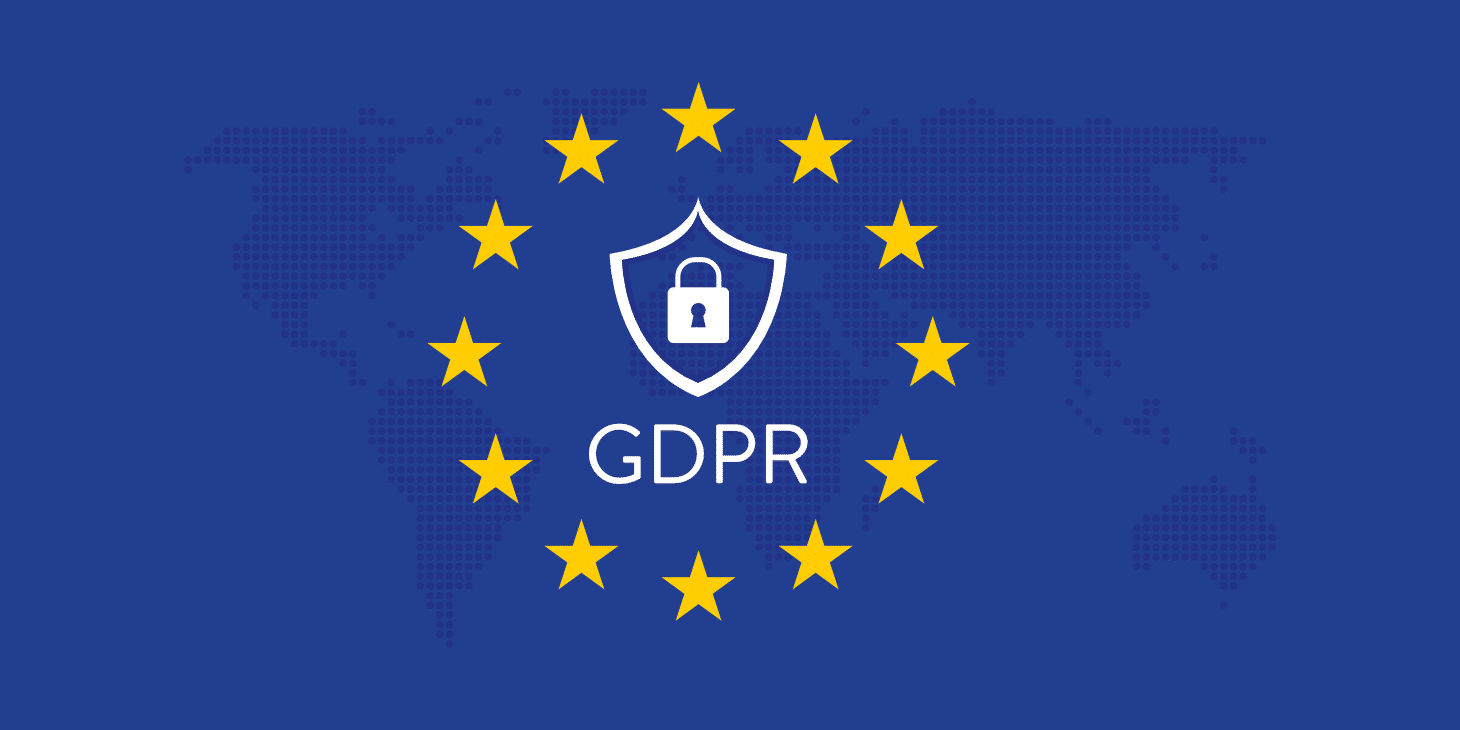
GDPR compliance applies to all webinar data collection and storage practices. Every registration, question, and participation metric constitutes personal data requiring protection under current privacy legislation. Single Sign-On integration maintains security while simplifying access for authorized employees.
Content formats and production best practices
Effective webinar content balances information delivery with engagement techniques that maintain attention while achieving specific communication objectives and behavioral outcomes.
Production quality directly impacts message credibility and audience perception of organizational competence. Professional execution demonstrates respect for employee time while reinforcing key messages through polished presentation and seamless technical delivery.
Format variations that work
Interview formats humanize leadership while breaking down traditional hierarchical barriers that limit authentic communication between executives and employees. Spontaneous responses to employee questions create transparency impossible through prepared statements or formal announcements.
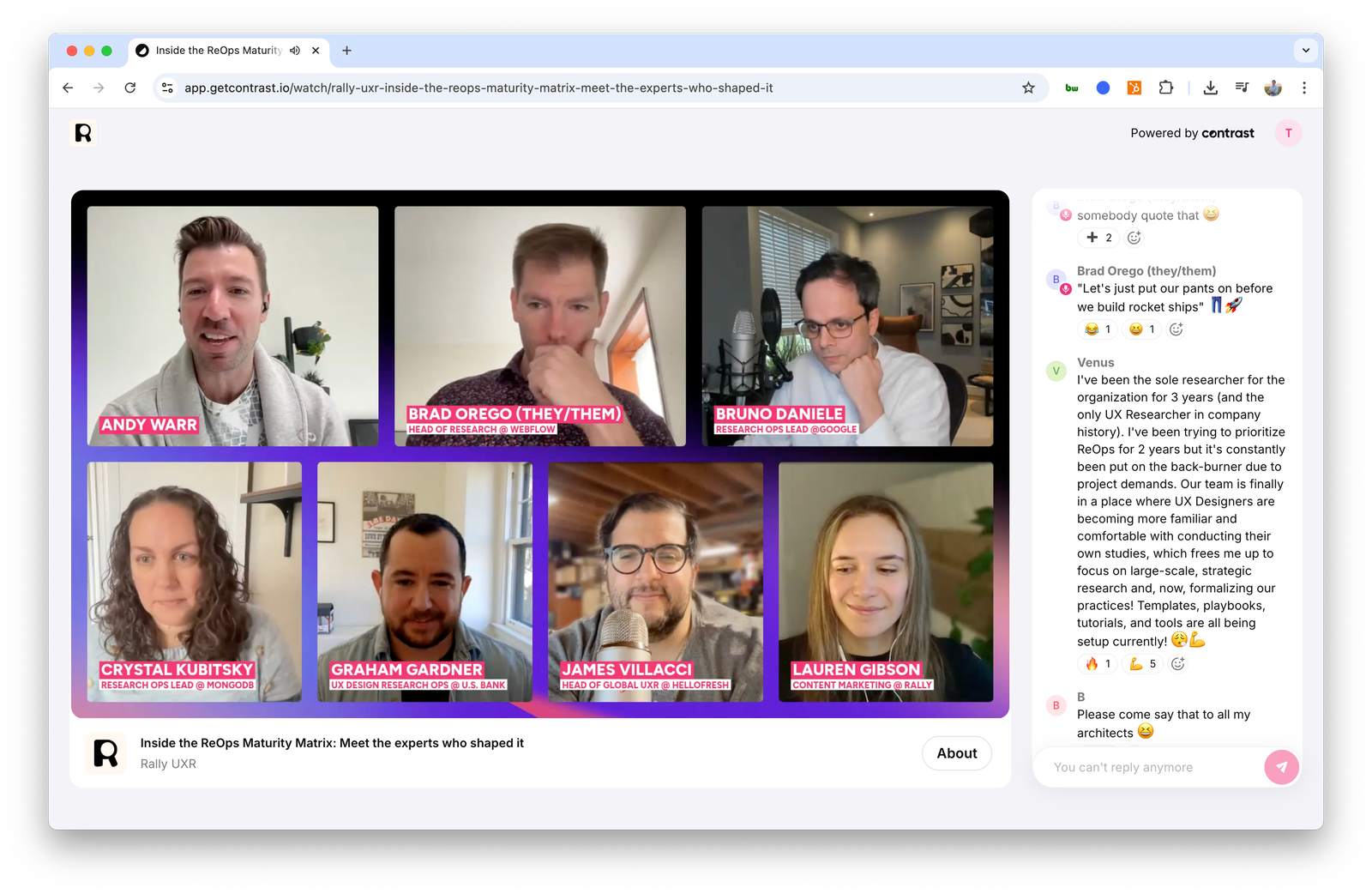
Internal expert panels showcase organizational talent while fostering cross-functional collaboration. Featuring employees as subject matter experts builds pride and recognition while demonstrating internal capabilities that employees might not otherwise discover or appreciate.
Interactive workshop formats transform information sharing into skill development that employees can immediately apply to their work responsibilities. Hands-on learning achieves significantly higher retention rates than passive presentation formats while building confidence and competence simultaneously.
Production quality standards
Audio quality represents the most critical technical factor affecting audience engagement and message comprehension. Clear sound enables understanding while poor audio undermines even excellent content and professional preparation efforts.
Content preparation requires systematic approaches that ensure coherent message delivery. Structured scripts and visual storyboards coordinate presentation elements while maintaining natural conversational tone that engages rather than lectures audiences.
Professional lighting and camera positioning create credible visual presentation that supports speaker authority and organizational reputation. These production investments demonstrate attention to detail that reflects organizational standards and respect for participant experience.
Implementation guide: getting started successfully
Systematic program launch requires careful planning that ensures sustainable success while building organizational capabilities and stakeholder confidence that support long-term growth and improvement.
Foundation building determines program effectiveness and adoption rates that influence return on investment calculations and continued resource allocation for communication infrastructure development.
Building internal buy-in
Concrete financial analysis proves more persuasive than theoretical benefits for budget-conscious stakeholders who must approve resource allocation and ongoing program support within competitive organizational priorities.
Calculate current communication costs including meeting time, venue expenses, and travel budgets then compare with webinar investment requirements. Early adopter identification among management creates organic advocacy that spreads more effectively than mandated participation or top-down implementation approaches.
Business case development should address predictable objections proactively rather than defensively responding to resistance after implementation begins. Clear value propositions based on measurable outcomes build confidence while establishing realistic expectations for program development and maturation.
Pilot program framework
Strategic pilot programs test essential capabilities without risking substantial resource investments or organizational credibility if initial results don't meet expectations or reveal significant implementation challenges.
Successful pilots define clear scope boundaries and measurable success criteria that guide evaluation and scaling decisions. Three-month timelines provide adequate testing duration while maintaining implementation momentum and stakeholder engagement throughout development phases.
Cross-functional project teams ensure comprehensive expertise coverage including technical platform management, content development, and change management capabilities. Diverse team composition builds program sustainability through shared ownership and varied perspectives that strengthen implementation success.
Scaling organization-wide

Progressive expansion maintains quality standards while building organizational capabilities that support sustainable growth and continuous improvement based on experience and feedback from each implementation phase.
Format standardization and template development create consistency without eliminating creativity or authentic communication that drives employee engagement. Facilitator training programs build internal capabilities that reduce dependence on external resources while maintaining professional execution standards.
Long-term impact measurement demonstrates program value through improved organizational performance metrics including HR indicators, business process optimization, and employer brand strengthening. These outcomes justify continued investment while providing evidence of communication program contributions to overall business success.
Conclusion: your communication transformation starts now
Internal communications webinars represent a fundamental shift toward interactive, engaging employee communication that drives measurable business results including increased engagement, reduced turnover, and improved productivity.
Modern employees expect participation in organizational dialogue rather than passive consumption of corporate announcements. The competitive advantage gained through superior internal communication diminishes with every day organizations delay implementation while competitors adopt more effective employee engagement strategies.
Perfect initial execution isn't required for program success. Starting with imperfect webinars beats waiting for ideal conditions that never arrive in dynamic business environments where communication needs continue evolving.
Your transformation toward engaged, aligned, and productive organizational culture begins with your next communication decision. The opportunity to gain sustainable competitive advantage through webinar implementation requires action rather than additional planning or preparation that delays measurable improvement in employee engagement and business performance.


Create Internal Webinars on Contrast
Start for free up to 30 registrants. No credit card needed.
Start for free
